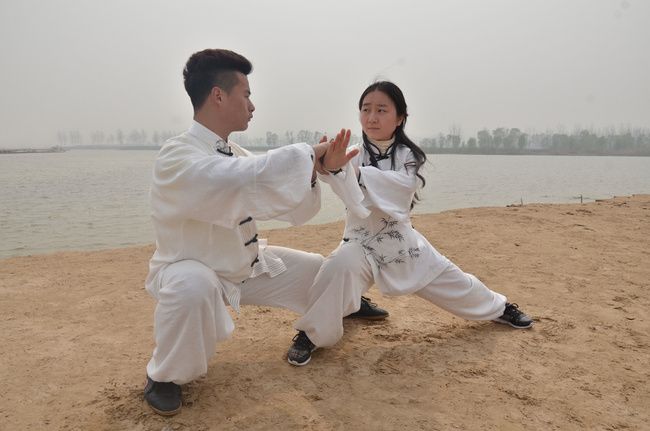My first-hand experience of Wing Chun is limited, so I have no opinion on the merits of the various lineages and variations of the art. I've seen a number of WC/WT advocates who seem to have solid technique, but I wouldn't know how to recognize their lineage.It's the topic of this thread.
Yeah, equally as uh, questionable.
@3:44 in this video he tries to show the pivot and it fails. lol Then he asks the guy to come slowly so he can show what he meant to do, but then tries to cover the goof up by saying "who cares" if he gets knocked out of position so badly. Well, he'd better care if he were really being attacked...
LTWT followers think people are going to go sailing past them if they just pivot and shift their weight over like that. It's clueless noob strategy. Who is going to completely run by like that, besides maybe a drunken idiot? And it becomes a central idea in that system.
Even using simultaneous attacks, it puts you in a bad position where mobility is hampered and posture is vulnerable. Don't forget the attacker has hands too and can change direction seamlessly and take you right over, by striking or grappling. If you think you're going to shift to the side and weight the rear leg and they'll just go sailing by, you're a dreamer.
@7:53 his kicking technique also fails in exactly the same way he criticized another method would. lol
Lastly, the "stance inserting footwork" works maybe on your WT mates, but against a boxer you're stepping right between their arms and into the "pocket", the worst place to be! Good luck getting there, and surviving if you do!
It's much more intelligent to fight their flanks and prevent them from refacing or let them over rotate as you stay squared and fight half a man, rather than having to worry about which side he's going to be punching from as you're moving right up the middle.
When I see strategy like this, I genuinely question the fighting experience of its advocates.
That said, I do understand structure and balance. The gentleman doing the demonstration in that particular video has ... issues with both. His basic stance is fundamentally unsound on multiple levels. I don't know if that has anything to do with his lineage or whether it's just an example of someone with no real fight experience developing bad postural habits.

